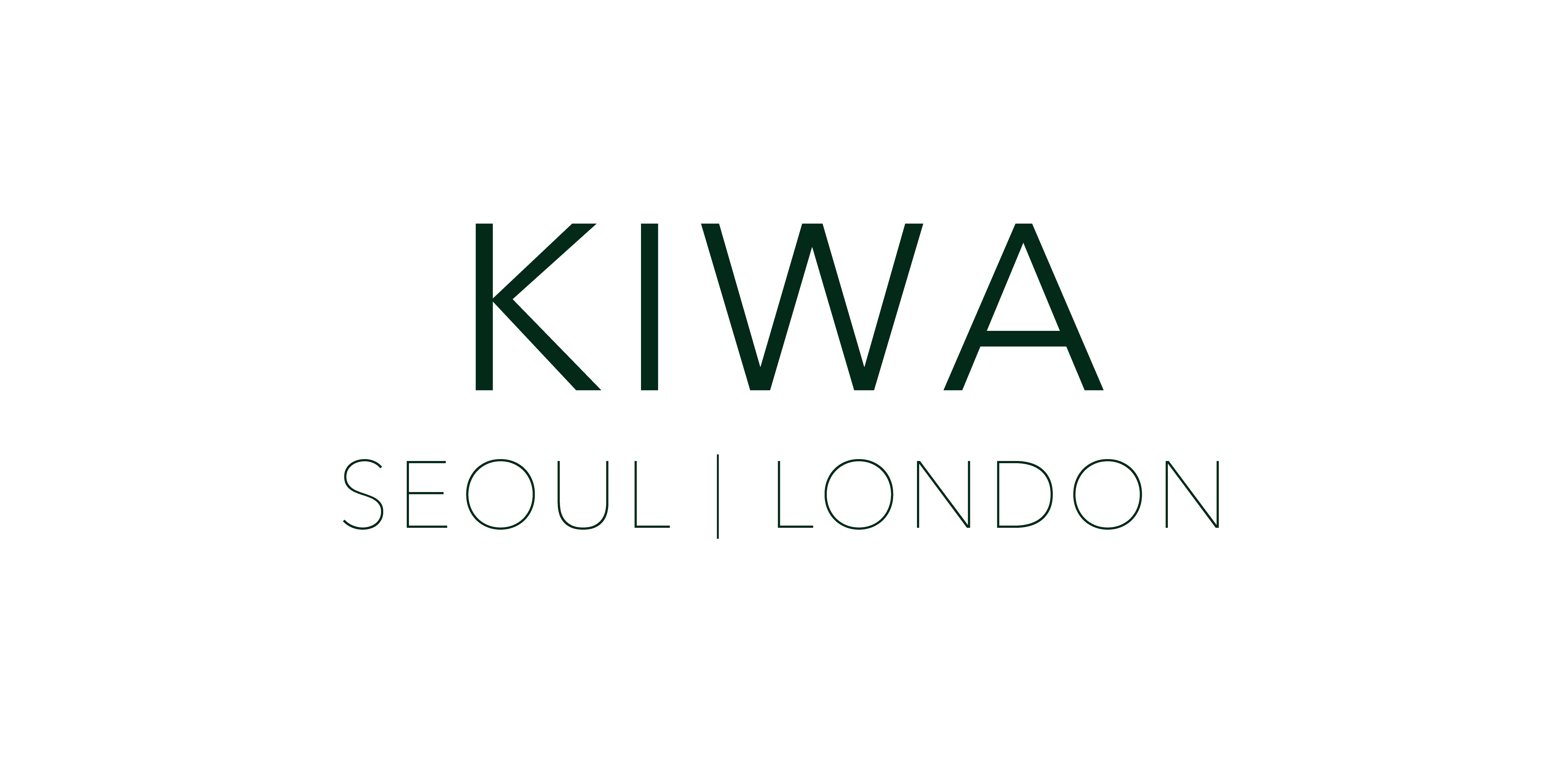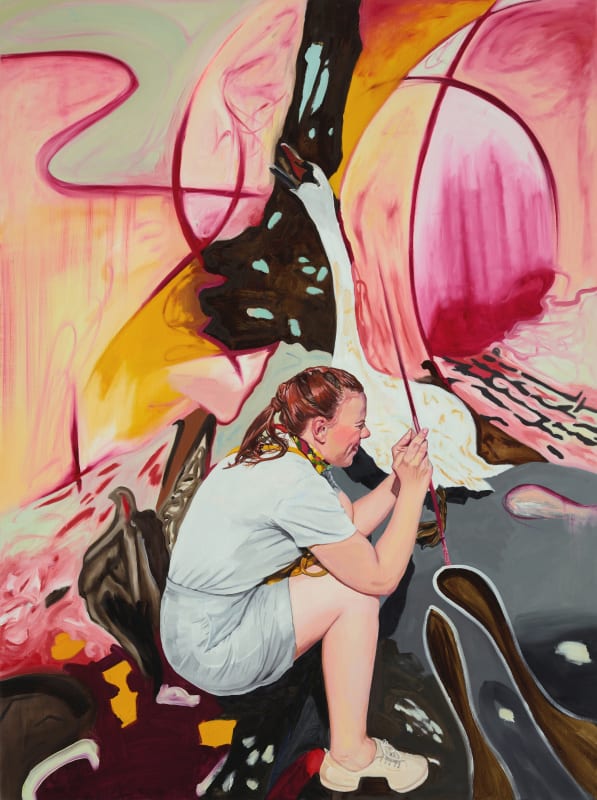Narrative Beyond Bounds: The Yellow Kid's Journey into Visual Art, Play, and New Ontology
Song Jinhyup (art critic)
In the realm of artistry, where many craft paintings, few embark on the creation of a complete ontology within their artworks. Enter Hyelim Cha, whose work stands as a uniquely innovative endeavor that beckons the whitespace surrounding the canvas frame to meld with the piece, inviting a narrative that transcends linguistic boundaries and encouraging an interactive theatrical engagement in observation. In Cha's solo exhibition, "Yellow Kid #5," a departure from conventional perspectival viewpoints is requested. The exhibition space engendered by these creations unfolds as a banquet of metaphors and interpretations, an orchestrated theater where time, space, and subjects seamlessly interlace and twirl.
Cha seamlessly incorporates the expansive margins beyond the canvas into the exhibition's essence. Traditionally, artwork narratives have existed in isolation, with each canvas resembling a discrete capsule, sporadically positioned within the exhibition space. However, in this exhibition, the works unveil a grand design that aspires to craft a more extensive, more intricate narrative that surpasses the confines of the canvas frame. The late 19th and early 20th centuries witnessed a pioneering transformation in the newspaper comic strip realm through "The Yellow Kid." Here, comics were fashioned as a series of compartmentalized rectangular scenes, where time and space began to deviate from one another. These discrete scenes, nevertheless, remained linked through slim bands of white space amidst the panels. This empty white space evolved into a mechanism linking the storytelling within the densely packed frames. In Cha's exhibition, square canvas frames mimic the structure of newspaper comic strips, akin to individual comic strips scattered three-dimensionally. The frames of the works and the expansive gallery walls separating them mirror the narrow, vacant spaces between comic strips. These empty, wordless gallery spaces function as cohesive forces, uniting the canvas frames to create more organic, three-dimensional speech bubbles or artistic narratives.
Cha introduces a transcendent narrative that extends beyond linguistic confines. While the artworks within this exhibition coalesce like comic strips, converging towards a broader formal narrative, the figures and scenes depicted within the canvases transcend linear storytelling. They radiate beyond coherence. The figures and objects are haphazardly situated within an enigmatic pictorial realm. Most of the images are fragmentary remnants of a combination of real portraits and imagined backgrounds. Their rationale is rather imaginative, their contextual layers warped, and contexts conveyed through manifold overlays. They resemble prime numbers in mathematics, indivisible save for themselves, or like sign language, lacking the grammar elements of everyday speech. These scene narratives harbor their own distinct internal rules, yet they elude facile analysis or grasp by the common observer. The images and narratives presented possess a tangible presence that defies immediate manifestation, urging interpretation and understanding while evading easy capture.
Cha implores a perspective that engages as an interactive theater, thereby fostering a personal experiential narrative, a play, and perchance, a game. The rules, surprisingly straightforward, prompt one to view the dispersed individual pieces and their interconnectedness as a holistic, three-dimensional narrative akin to comic storytelling. Within each individual work, viewers possess the liberty to fill the transcendent metaphors and interpretations, much like one populates empty speech bubbles. Courage may waver when faced with the task of bridging the vacant gap between two frames seemingly leading nowhere. Under the exhibition's searing illumination, the gap between frames transforms into a white exclamation rather than a condensed narrative seam. Individually, the artworks resemble game prologues that participants navigate sans a manual, relying solely on their interpretation. Ultimately, the vast emptiness of the gallery wall, disconnected from any narrative, evolves into white noise, inducing cognitive and physiological disquietude in the viewer. The expansive emptiness of the individual canvases may also become integral to a digital game or metaverse, easily manipulated and governed by the participant's individual interpretation or manipulation.
For those who lack the opportunity to physically experience the exhibition space, this entirely novel sensory and viewing paradigm remains elusive. This is where Cha introduces "Auti-Sim," an experiential game tailored for individuals with autism experiencing auditory hypersensitivity. Distinct from conventional cognitive processes, this form of autism is characterized by an inability to construct meaningful auditory stimuli due to either extreme amplification or insufficient filtration of noise. The unrestrained onslaught of noise in this simulation game is undeniably disconcerting, yet it offers a direct avenue for apprehending the cognitive and physiological distress faced by individuals with autism. Naturally, participants are left to navigate the experience unaided, relying solely on their own manipulation. Ultimately, the simulation game and Cha's exhibition offer a common pathway: a means to narrow the expansive void between meanings, leading to an overarching narrative that penetrates all significance. Manipulating the inherent meaninglessness within meaning to uncover the original meaning of individual subjects. Cha tentatively suggests that these two seemingly disparate pathways are coextensive, akin to the phenomenon of quantum entanglement. Thus, the exhibition ought to be regarded as an exploration of the ontological possibilities within painting, transcending a mere exhibition centered on painting. A novel form of visual art storytelling, one not easily birthed, unfolds here and now.

